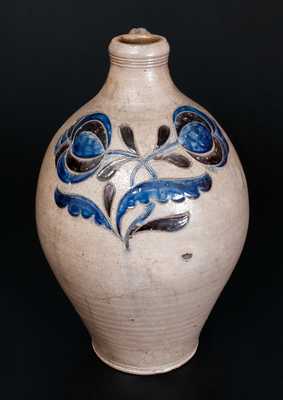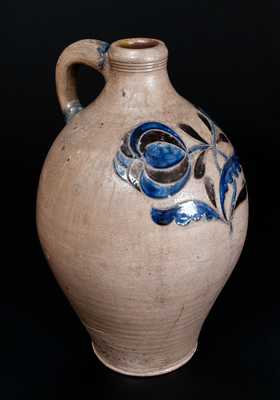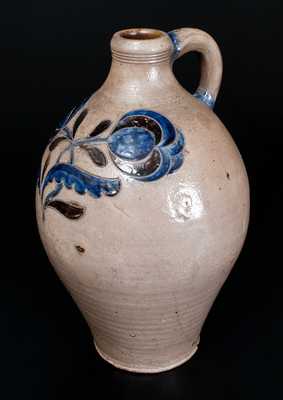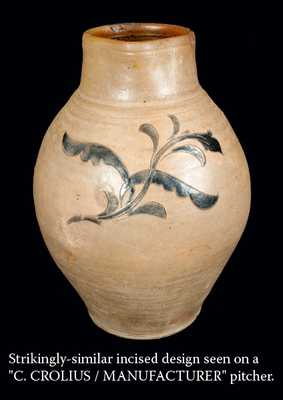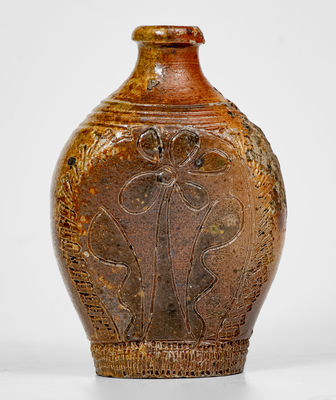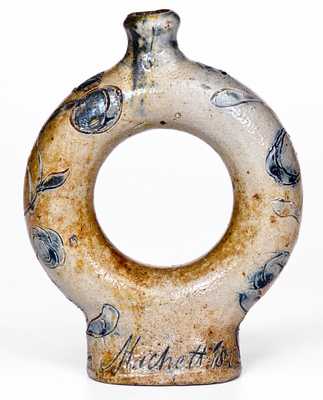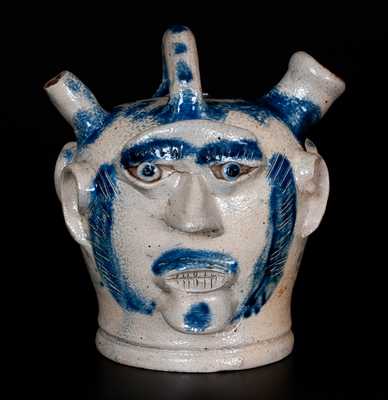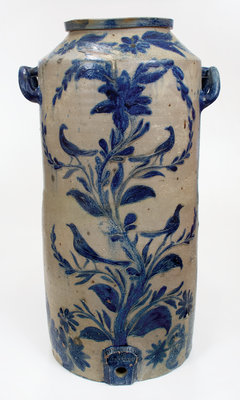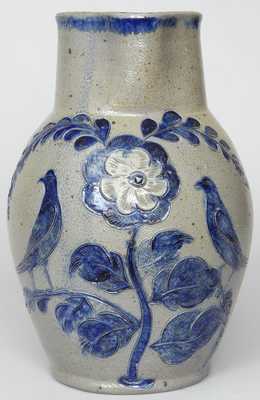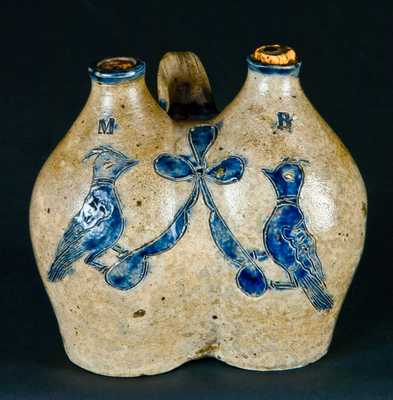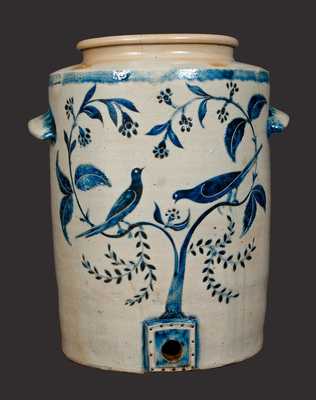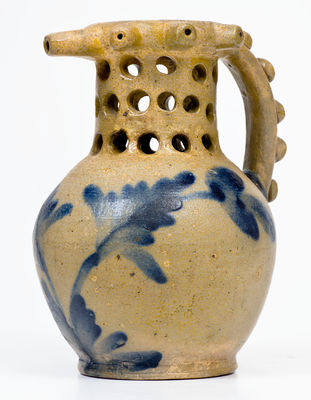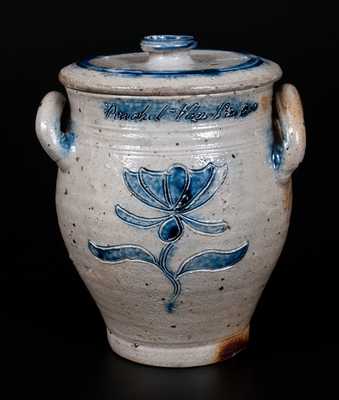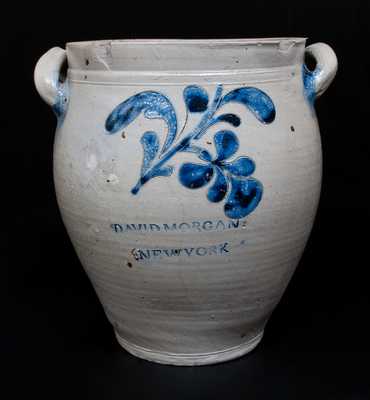Outstanding and Important Three-Gallon Stoneware Jug with Incised Floral Design and Two-Color Slip Decoration, probably Manhattan, NY, possibly Clarkson Crolius, Sr., circa 1775-1795, ovoid jug with footed base, heavily-tooled spout, and ribbed handle, the front featuring an elaborate incised floral design with crossing stems. Decoration includes large, circular blossoms composed of tightly-packed, semi-circular petals, stems formed from a three-pronged stylus, and scallop-edged leaves. Combed embellishments appear on each flower petal and leaf, and slip highlights are carefully applied throughout the design in blue cobalt oxide and purplish manganese dioxide. Brushed cobalt highlights appear at the handle terminals. The fantastic two-color slip decoration on this jug, an exceptionally rare treatment in American stoneware, closely connects it to our nation's potting ancestry in the Westerwald region of Germany. The use of multi-tined tools, as seen on the stem and interiors of the flowers and leaves, are also related to German examples of the 17th and 18th centuries. The decoration, color, and form, are consistent with some of the finest pieces produced in New York City and New Jersey during the late 18th century. The rounded blossoms and two-color slip, for example, are reminiscent of slip-trailed pomegranate designs found on pieces produced at the Kemple Pottery of Ringoes, NJ. However, sherds excavated at this site reveal a much more naive style to their incised designs. The artistry of the incising on this example, including the scalloped leaves and crossing stems, indicate it was most likely made in Manhattan, NY, where fine incising was more commonly employed. While a definitive answer on a specific maker is unknown, one likely candidate is the well-known potter and politician, Clarkson Crolius, Sr. A large stoneware pitcher, sold in our March 2, 2013 auction and bearing the impressed mark, "C. CROLIUS / MANUFACTURER", includes similar incised leaves that cross over a central stem. A second piece, an extraordinary jar gifted to Yale University by John Paul Remensnyder, features an incised lion on the front and a large floral motif on the reverse. It includes similar leaves, a tripartite stem, combing, and two-color slip decoration. The jar's daisy design with impressed floral center suggests it is an early product of Clarkson Crolius, Sr. This jug is considered one of the most beautiful pieces of early incised stoneware we have ever offered, exemplifying in its color, incising, and even-toned glazing, why Manhattan was the standard bearer of early American stoneware production. Its clear connection to the stoneware industry of the Old World adds greatly to its historical significance. A large sealed spider crack on reverse, including a crack that continues around the side of the jug below decoration. Two small chips to foot. H 16 1/4".

